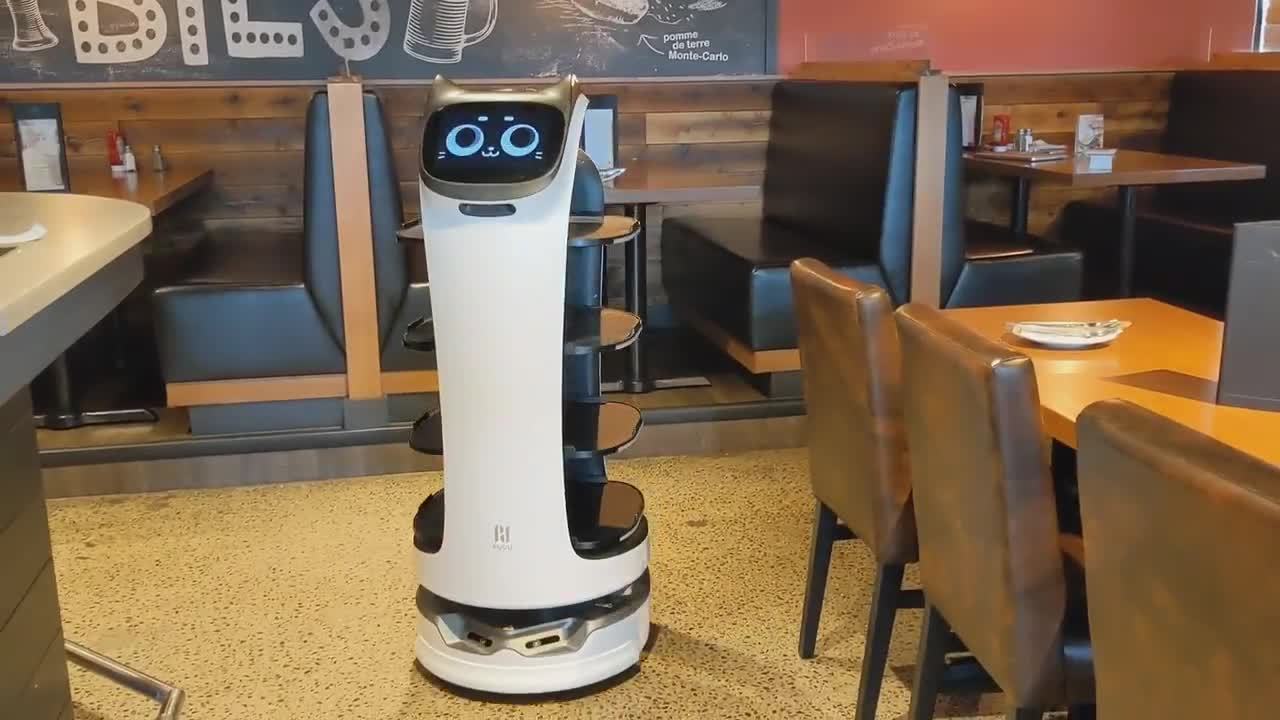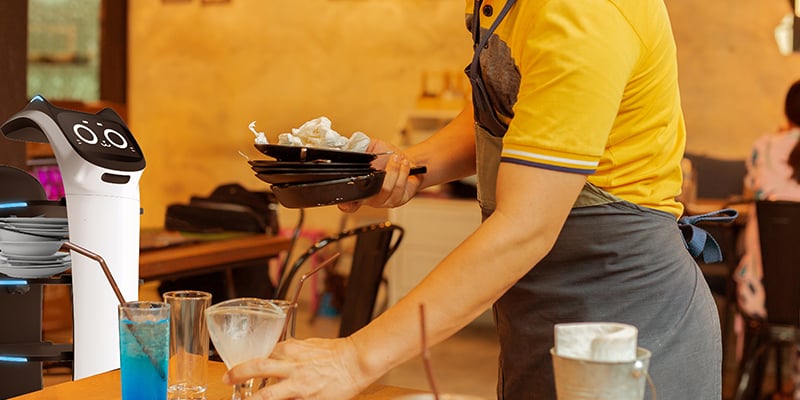By Shannon Flynn

Automation in the restaurant industry has become a growing trend. From Sally, the salad-making robot, to Flippy the burger and fry cook, AI is taking the restaurant industry by storm. Why? Because despite the sizable investment in these machines, they are helping restaurants grow and become more profitable.
What Is Restaurant Automation?
What is restaurant automation? It is very likely you’ve already interacted with AI in the restaurant industry and might not have even realized it. Essentially, it is the use of robotic hardware and software to complete tasks throughout a restaurant without human input.
So, what kind of tasks do restaurant automated and robotic devices complete? From start to finish – from ordering to plating the food and serving it – there are many opportunities for automation to enter the picture. Robots are currently being used:
-Deliver food from restaurants to homes
-Act as restaurant hosts
-Serve food
-Take orders and payments
-Clear and set tables
-Prepare ingredients
-Cook and plate food
Realistically, there is no task that some type of automated robot can not handle in a restaurant. Even hotels are not off-limits, since some robots – like FlashBot – can take the elevator with confidence.
The above examples only scratch the surface. As automation in the restaurant industry continues to grow, so will the types of robots and the jobs they can complete.
How Does AI Help Restaurants Succeed?
One might think using robots in restaurants is simply becoming the trendy thing to do. While this may be true, there is a multitude of benefits robots bring to the table that can help restaurants succeed.
First, using robots like PuduBot in restaurants and food delivery solves the labor shortage many restaurants are encountering. In November 2021, 1 million restaurant and hotel workers quit their jobs, leading to only 3% of restaurant owners saying they are not struggling to hire. Robots fill those empty positions, solving the restaurant’s hiring woes.
Second, robots save restaurants money. The most notable way is by cutting down on labor costs. Fast food robots cost an average of $3 per hour to operate compared to a minimum wage of $7.25 to $15.20 per hour depending on the location. That is a big gap, especially when you consider that one robot can do the job of multiple employees. Many guests may even find the demeanor and experience provided by robots such as BellaBot superior to the traditional approach.
Finally, robots increase the efficiency of the restaurant. Robots decrease order inaccuracies – both in taking orders and making the food – reduce food waste, consistently prepare food exactly as designed, and improve the efficiency of food safety practices.
It is possible robots may lessen some restaurants’ insurance liabilities while complicating them in others. Insurance policies can be opaque and confusing, but reducing a labor pool in favor of a smaller crew of robots could make certain kinds of legal and ethical obligations more straightforward to manage, such as employee insurance coverage and hazard pay.
Case Studies of Successful Restaurant Automation
The best way to see the true benefits of automation in restaurants is to look at successful implementations. While there are hundreds of successful implementations, here are three of the top ones.
La Duni
La Duni, after finding itself short-staffed in Dallas, turned to robots to help solve its labor shortage. Alexcita, Coqueta, and Panchita are La Duni’s three new robotic employees, working as food runners and hosts. The owner, Taco Borga, says each robot costs $8 to $10 per day compared to $10 per hour for each employee. The robots also assist other employees, allowing them to be more efficient and give more attention to other tasks.
Merry-Go-Kitchen
Merry-Go Kitchen, a contactless restaurant in Seoul, employs self-navigating robotic servers. Customers are able to scan a QR code on each table and then order food via the Baemin Smart Order system. From there, food is prepared by human chefs before being loaded onto the trays of robots who can navigate to the table number entered in by an employee.
CaliBurger
CaliBurger employs Flippy, the automated fry cook. Flippy is able to cook over 200 burgers per hour, far more than the machine’s human counterparts. Not only does production increase, but Flippy also operates on just $3 per hour, never goes home, and draws an increase in customers who want to come to see him work.
Restaurants of the Future
Robots and automation are slowly taking over the restaurant industry as they cut costs while simultaneously boosting efficiency. While the need for human employees remains and there will continue to be bugs that need to be worked out, automation appears to be the future of the restaurant industry.
Discover more about Restaurant Robots with RobotLAB!

About the author

e-mail: shannonleighflynn@gmail.com

